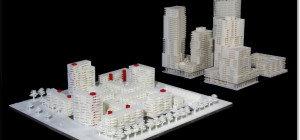 Cold heading, also known as cold forming, alters and shapes metal usually at a cooler room temperature. Whether the process is done in cooler temperatures or at room temperature, it is a function of the kind of metal used in the process and the strength of the machinery forming it. Cold heading does not shave off any material, so waste can be reduced to almost zero. Also, the closer the temperature remains to room temperature the less spent on heating the metal.
Cold heading, also known as cold forming, alters and shapes metal usually at a cooler room temperature. Whether the process is done in cooler temperatures or at room temperature, it is a function of the kind of metal used in the process and the strength of the machinery forming it. Cold heading does not shave off any material, so waste can be reduced to almost zero. Also, the closer the temperature remains to room temperature the less spent on heating the metal.
So what exactly are the techniques used in cold heading that produce benefits that exceed those of other available options?
The three general techniques used during a cold heading production process are:
- Forward extrusion
- Backward extrusion
- Upset
Forward Extrusion
Forward extrusion is designed to reduce the overall diameter of the metal by forcing the metal to flow through a cavity that has a smaller diameter than the piece itself. While the metal is pushed through this cavity, extreme weight is used in order to compress the metal down upon itself. Different metals have a different yield in terms of compression, with softer metals such as aluminum, tin and gold providing an extremely desirable yield. Harder metals, including steel and iron, do not have much of a compression, so pushing these materials through the cold heading hardware is not going to generate as thin a final product as the software materials that are less dense.
Backward Extrusion
Backward extrusion is the process that makes holes that allow the material to flow backward around the cold heading item, which is then used to create what is known as a penetrating punch. The penetrating punch basically pushes pieces of the metal out through the created holes, without actually cutting the metal out. It simply forces some of the current metal out. It is important to understand that some manufacturing methods actually call for the use of one or all three of the different methods. The method or methods used depend on the function of the final product. For example, if the manufacturer is producing wiring or other circular material they may simply need the metal to be flattened into a smaller form to create a thin, circular shaped piece of metal. The backward extrusion process is useful in this scenario.
Upset
Upset is the process of cold heading in which the material is upset right at the face where it can then be opened or trapped in order to create a specific shape. While backward extrusion might simply force it into a circular shape, upset allows for much more variety and helps control the concentricity of the finished part, thus allowing a manufacturer to create the exact shape and design necessary for a particular order.
The process of cold heading allows a manufacturer to produce a final product that produces very little scrap while retaining its strength, quality, and consistency.







